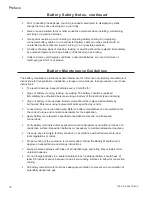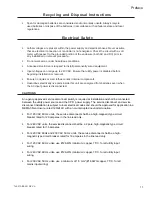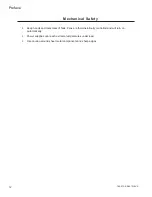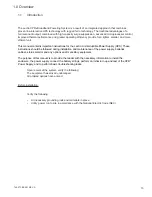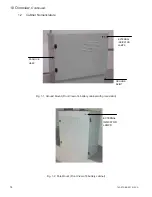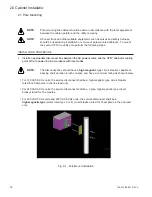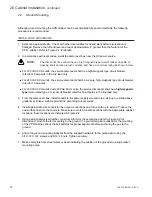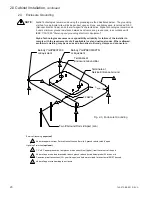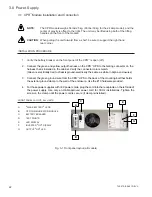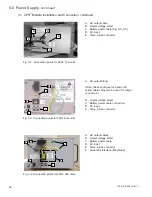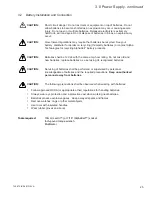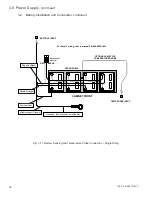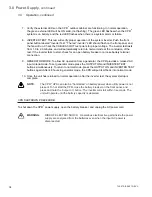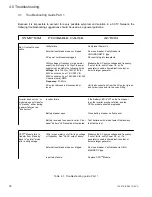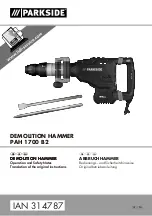
23
3.0 Power Supply
,
continued
745-573-B0-001 REV. A
5.
If the batteries are not installed, install them at this time per the instructions in Section 3.2. Connect
the
battery sensing wire harness
to the appropriate battery terminals as shown in Figure 3-7 or
3-8. Use appropriate flat washers when connecting this harness to small battery terminals. Plug
the connector from the
battery
sensing harness
into the mating connector on the
CPR
TM
Communicator Module
at the front of the power supply module.
6.
Locate the wire harness that connects to the LEDs on the exterior of the CPR outdoor enclosure.
Plug this harness into the mating connector on the
CPR
TM
Communicator Module
at the front of
the power supply module.
7.
If a
Tamper Switch
is installed in the cabinet, plug it’s wire harness into the mating connector on
the
CPR
TM
Communicator Module
at the front of the power supply module.
8.
If the optional
Battery Temperature Probe
is used, connect the sensor plate containing the small
PC board to the most negative battery terminal (the same terminal where the negative [black] wire
from the CPR
TM
module is connected, see Fig. 3-9 to 3-11). Plug in the modular phone type connector
into the RJ-11 port on the left side of the CPR
TM
module.
9.
Confirm that the battery breaker on the front of the CPR
TM
module is open (off). Connect the ring
lugs at the other end of this harness to the positive and negative terminals of the battery as described
in Section 3.2. Use appropriate flat washers when connecting this harness to smaller battery
terminals. Plug the large gray battery power plug into the receptacle on the left side of the CPR
TM
module (red and black connectors for 36 VDC units).
10. Select the appropriate output voltage for the network that this UPS is powering. This is accomplished
by plugging in the short yellow wire(s) on the left side of the CPR
TM
module into the receptacle
labeled “48 V,” “60 V,” 75 V,” or “87 V.” This setting determines the voltage that will be present at the
green and yellow connector on the output harness (or the coaxial fitting) when the CPR unit is
operating.
CAUTION:
If the unit is set for 75 or 87 VAC, verify the network components (actives and
passives) are rated to handle these higher voltages before energizing the CPR
TM
power supply.
11. Confirm that the external AC disconnect is OFF.
12. Plug the AC input cord into the receptacle at the left rear of the outdoor enclosure.
The CPR
TM
system is now ready to be energized. Follow the operating procedure in Section 3.3
3.1 CPR
TM
Module Installation and Connection,
continued


